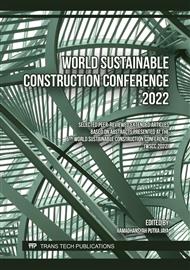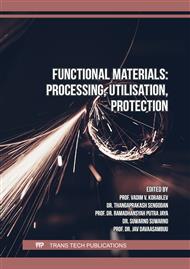p.157
p.165
p.173
p.179
p.191
p.201
p.213
p.225
p.233
Effect of Mixing Anadara Granosa Shells Ash and Fly Ash as a Cement Replacement on Foamed Concrete Properties
Abstract:
Foamed concrete is one of concrete types that classified as lightweight concrete. More than 25% cements that use to create the foamed concrete that causes foamed concrete is expensive material compared to conventional materials and a cause the community less accept the foamed concrete. The purpose of this research is to produce foamed concrete that is more economical by replacing some of the cement with a mixing Anadara granosa shell ash and fly ash. Anadara granosa shell ash and fly ash are wastes that are abundant in Aceh. Based on this, an experimental research was conducted to replace cement as binder with mixture of Anadara granosa shells ash with fly ash. Chemical properties of Anadara granosa shell ash was tested using the SEM-EDX method and mechanical properties of foamed concrete created from mixture of Anadara granosa shell ash and fly ash as binder was conducted using ASTM C 39, ASTM C-496 and ASTM C-293 standards . The variation of the mixture of Anadara granosa shell ash and fly ash is 0%, 5%AG:15%FA, 10%AG:10%FA, and 15%AG:5%FA at 7 and 28 days. The results of chemical properties of Anadara granosa shell ash has high calsium okside (CaO) content of 39.41%, respectively. The results of mechanical properties of Foamed concrete showed that the highest compressive strength occurred at the mixture of Anadara granosa shells ash and fly ash 15%AG:15%FA of 17.41 MPa at 28 days with an increase in the compressive strength of normal Foamed concrete reaching 33.90%. The highest tensile strength and flexural strength occurred at the combinations of mixture of Anadara granosa shells ash and fly ash 15%AG:5%FA of 2.88 MPa and 2.89 MPa then normal Foamed concrete of 2.46 MPa at 28 days. Based on these conditions, it can be conclude that the use of a mixture of Anadara granosa shell ash and fly ash efected the mechanical properties of Foamed concrete.
Info:
Periodical:
Pages:
233-240
Citation:
Online since:
March 2023
Keywords:
Price:
Сopyright:
© 2023 Trans Tech Publications Ltd. All Rights Reserved
Share:
Citation:



